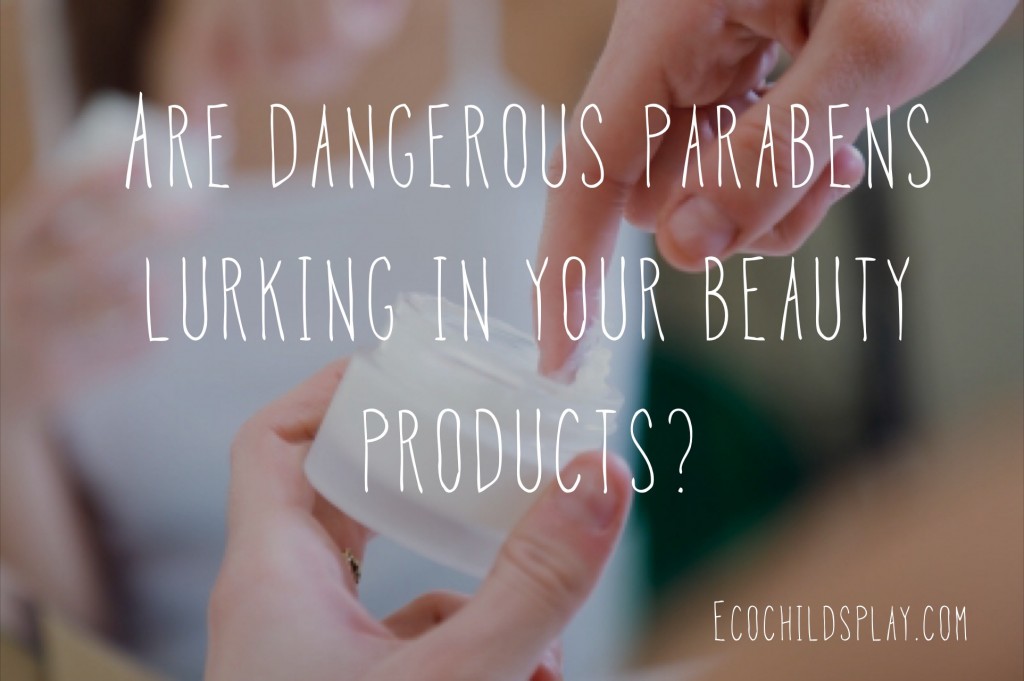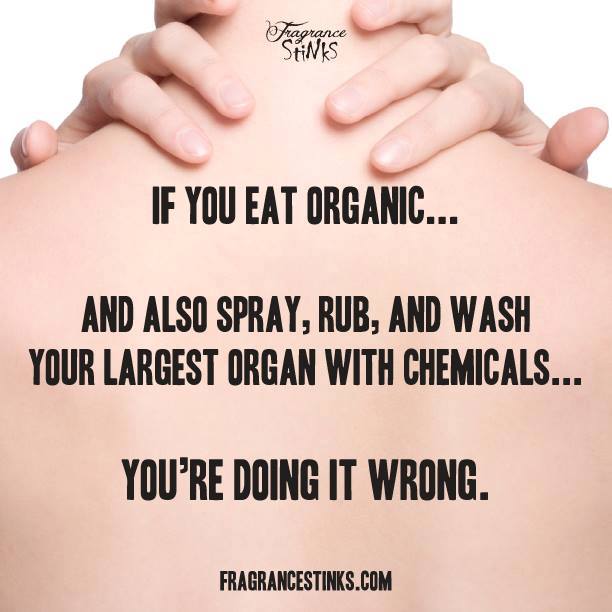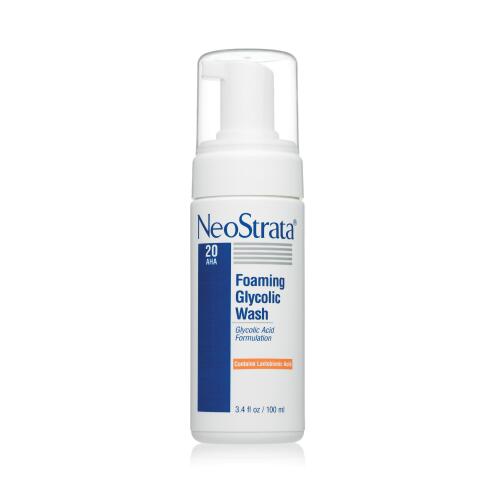
My first task for a beauty product review is to look at the ingredient list. Even though I have been doing this for years, I still don’t recognize many ingredient names or know their toxicity. There is one that clearly stands out: Methylparaben. This was the case when I looked at the ingredients of the NeoStrata Foaming Glycolic Wash.
What are parabens?

Parabens are commonly found in cosmetics and beauty products. They are used as a preservative for their antifungal and antibacterial properties. In fact, parabens are in 85% of cosmetics.((http://www.realsimple.com/beauty-fashion/skincare/worry-about-parabens)) The most common parabens used are butylparaben, methylparaben, and propylparaben. They are cheap and have been used for about 50 years. It is only within the last five years that the safety of parabens has come into question.
How do parabens enter the body?
Parabens enter the body directly through your skin. Where parabens have been detected in the human body, the chemical has been “largely intact”. This signifies that the paraben exposure did not come from food, which would have had to pass through the liver and altered the parabens.((http://www.prevention.com/beauty/skin-care/parabens-dangerous-preservative-cosmetics)) According to the U.S. National Library of Medicine, the liver “takes up toxic substances and converts them into harmless substances or makes sure they are released from the body”.((http://www.ncbi.nlm.nih.gov/pubmedhealth/PMH0072577/))
Why should I avoid parabens in my beauty products?
Parabens are xenoestrogens, which means they mimic estrogen in the body. The Environmental Working Group (EWG) specifically describes methlyparaben, the paraben I found in NeoStrata Foaming Glycolic Wash.
Methylparaben is in the paraben family of preservatives used by the food, pharmaceutical, and personal care product industries. Parabens mimic estrogen and can act as potential hormone (endocrine) system disruptors.((http://www.ewg.org/skindeep/ingredient/703937/METHYLPARABEN/#))
Parabens have been found in breast cancer tumors. The Campaign for Safe Cosmetics (CSC) has been calling for a ban of parabens in the US. The European Union banned parabens in 2012.((http://www.scientificamerican.com/article/should-people-be-concerned-about-parabens-in-beauty-products/))
CSC cites a 2004 British study that detected traces of five parabens in the breast tumors of 19 out of 20 women studied. “This small study does not prove a causal relationship between parabens and breast cancer, but it is important because it detected the presence of intact parabens—unaltered by the body’s metabolism—which is an indication of the chemical’s ability to penetrate skin and remain in breast tissue.” According to the group, a more recent study found higher levels of one paraben, n-propylparaben, in the axilla quadrant of the breast where the highest proportion of breast tumors is found. CSC reports that parabens have also been linked to reproductive, immunological, neurological and skin irritation problems.((http://www.scientificamerican.com/article/should-people-be-concerned-about-parabens-in-beauty-products/))
Eight years later, a larger study replicated the results of the British study. Scientists found parabens in 99% of breast cancer tumor tissue.((http://www.prevention.com/beauty/skin-care/parabens-dangerous-preservative-cosmetics))und
The studies have been criticized for not examining healthy breast tissue for paraben presence.((http://www.realsimple.com/beauty-fashion/skincare/worry-about-parabens))
Parabens have also been detected in human urine.((http://www.prevention.com/beauty/skin-care/parabens-dangerous-preservative-cosmetics))
How dangerous are parabens in cosmetics?
EWG gives methlyparaben a hazard score of four (ten being the most hazardous). ((http://www.ewg.org/skindeep/ingredient/703937/METHYLPARABEN/#)) Other parabens such as butylparaben have received higher hazard scores of seven.((http://www.ewg.org/skindeep/search.php?query=parabens))
Even though products may contain small amounts, cumulative exposure can be high due to the fact that they are found in 9 out 10 products in grocery story personal care aisles. ((http://www.scientificamerican.com/article/should-people-be-concerned-about-parabens-in-beauty-products/))
No direct link has been established between parabens and breast cancer, but why take the chance? It is also suggested that due to parabens ability to mimic estrogen in the body, the onset of early puberty in girls could also be linked to this ubiquitous chemical.((https://en.wikipedia.org/wiki/Paraben))
The product we were sent to review lists methylparaben near the end of the ingredient list.
NeoStrata Foaming Glycolic Wash gets rave reviews, but honestly, I am afraid to try it given it contains methylparaben.
- Formulated with high-strength 18% Glycolic Acid and 2% Lactobionic Acid to exfoliate, unclog pores, and stimulate cell renewal
- Prepares skin for antiaging treatments for best results
- Soap-free, dye-free, and pH balanced; it’s built to rejuvenate your skin and enhance your antiaging regimen
This cleanser is recommended for experienced Glycolic Acid users who are ready to kick results up a notch. Best used as part of an antiaging regimen, NeoStrata Foaming Glycolic Wash targets congested pores and stimulates cell renewal for skin that’s prepared for optimal benefits of the regimen that follows. Once you’ve tried it—you’ll never go back to a regular wash again. Here’s to a fresh-faced, younger-looking appearance!
For this product, the hazard score from EWG is relatively low at four, yet there are these concerns:
Other HIGH concerns: Endocrine disruption, Contamination concerns, Irritation (skin, eyes, or lungs), Persistence and bioaccumulation; Other MODERATE concerns: Biochemical or cellular level changes, Organ system toxicity (non-reproductive); Other LOW concerns: Enhanced skin absorption, Data gaps, Ecotoxicology, Occupational hazards((http://www.ewg.org/skindeep/product/52689/NeoStrata_Foaming_Glycolic_Wash_AHA_20_%282010_formulation%29/))
Although methlyparaben is the second to last ingredient on the list for NeoStrata Foaming Glycolic Wash, it is the cumulative effect of parabens in many products that is concerning. Scientific American explains:
What worries public health advocates is that while individual products may contain limited amounts of parabens within safe limits set by the U.S. Food & Drug Administration (FDA), cumulative exposure to the chemicals from several different products could be overloading our bodies and contributing to a wide range of health problems. “Of greatest concern is that parabens are known to disrupt hormone function, an effect that is linked to increased risk of breast cancer and reproductive toxicity,” reports the non-profit Campaign for Safe Cosmetics (CSC). “Parabens mimic estrogen by binding to estrogen receptors on cells.” Research has shown that the perceived influx of estrogen beyond normal levels can in some cases trigger reactions such as increasing breast cell division and the growth of tumors.((http://www.scientificamerican.com/article/should-people-be-concerned-about-parabens-in-beauty-products/))
Ironically, this product designed to improve skin and make you look younger may do exactly the opposite. Methlyparaben has been found to increase skin aging and DNA damage from sun exposure.((https://en.wikipedia.org/wiki/Paraben)) NeoStrata Foaming Glycolic Wash does come with a warning about this.
Parabens should be avoided. There is no reason to take even the slightest risk. There are many paraben-free options out there.
Here are four paraben-free brands I trust and use regularly:


Thank you for this impressive and well written article about Parabens. You did an amazing job of making this easy to understand for the mass audiences.
Another brand that is dedicated to Safety and has AMAZING products is Beautycounter. You would love that all of their products are on the EWG website and rank from 0 – 2. With a never list of over 1500 harmful ingredients that they will never use in any of their products, you can feel confident and at ease when shopping with them.
Once again, greatly appreciate this post! I will share this with my clients and people that I know.